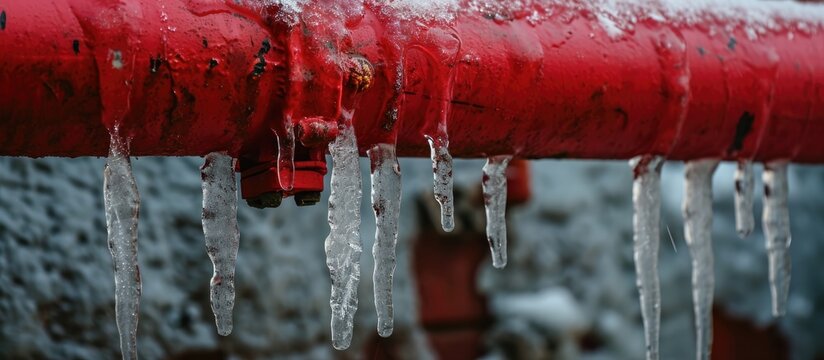Avoiding Frozen Pipes: Top Methods for Cold Weather
Avoiding Frozen Pipes: Top Methods for Cold Weather
Blog Article
Were you trying to locate facts and techniques around Helpful Tips to Prevent Frozen Pipes this Winter?

Winter can ruin your pipes, particularly by freezing pipes. Here's just how to avoid it from taking place and what to do if it does.
Introduction
As temperatures decrease, the danger of icy pipes increases, possibly bring about expensive repair services and water damages. Understanding just how to avoid frozen pipes is vital for home owners in cold climates.
Prevention Tips
Shielding at risk pipelines
Wrap pipes in insulation sleeves or utilize warmth tape to shield them from freezing temperature levels. Focus on pipes in unheated or exterior locations of the home.
Home heating methods
Keep indoor areas sufficiently heated, specifically areas with plumbing. Open cupboard doors to permit warm air to distribute around pipelines under sinks.
Exactly how to recognize frozen pipes
Seek decreased water flow from taps, uncommon smells or noises from pipes, and visible frost on subjected pipes.
Long-Term Solutions
Structural modifications
Take into consideration rerouting pipelines far from outside walls or unheated areas. Include added insulation to attics, cellars, and crawl spaces.
Updating insulation
Invest in top quality insulation for pipes, attics, and walls. Correct insulation assists preserve constant temperatures and decreases the risk of icy pipelines.
Safeguarding Outdoor Pipes
Garden pipes and outdoor taps
Disconnect and drain pipes yard pipes before winter months. Set up frost-proof faucets or cover outdoor taps with insulated caps.
Recognizing Frozen Pipelines
What causes pipes to ice up?
Pipelines ice up when exposed to temperatures listed below 32 ° F (0 ° C) for expanded durations. As water inside the pipelines freezes, it increases, putting pressure on the pipeline walls and possibly creating them to break.
Risks and damages
Frozen pipelines can lead to water interruptions, residential or commercial property damages, and costly repair services. Burst pipes can flooding homes and cause comprehensive structural damages.
Indications of Frozen Pipeline
Identifying icy pipes early can prevent them from rupturing.
What to Do If Your Pipelines Freeze
Immediate activities to take
If you presume frozen pipelines, keep taps available to ease stress as the ice melts. Make use of a hairdryer or towels soaked in warm water to thaw pipes slowly.
Verdict
Avoiding icy pipelines requires positive measures and quick actions. By recognizing the causes, indications, and safety nets, home owners can protect their plumbing during winter.
5 Ways to Prevent Frozen Pipes
Drain Outdoor Faucets and Disconnect Hoses
First, close the shut-off valve that controls the flow of water in the pipe to your outdoor faucet. Then, head outside to disconnect and drain your hose and open the outdoor faucet to allow the water to completely drain out of the line. Turn off the faucet when done. Finally, head back to the shut-off valve and drain the remaining water inside the pipe into a bucket or container. Additionally, if you have a home irrigation system, you should consider hiring an expert to clear the system of water each year.
Insulate Pipes
One of the best and most cost-effective methods for preventing frozen water pipes is to wrap your pipes with insulation. This is especially important for areas in your home that aren’t exposed to heat, such as an attic. We suggest using foam sleeves, which can typically be found at your local hardware store.
Keep Heat Running at 65
Your pipes are located inside your walls, and the temperature there is much colder than the rest of the house. To prevent your pipes from freezing, The Insurance Information Institute suggests that you keep your home heated to at least 65 degrees, even when traveling. You may want to invest in smart devices that can keep an eye on the temperature in your home while you’re away.
Leave Water Dripping
Moving water — even a small trickle — can prevent ice from forming inside your pipes. When freezing temps are imminent, start a drip of water from all faucets that serve exposed pipes. Leaving a few faucets running will also help relieve pressure inside the pipes and help prevent a rupture if the water inside freezes.
Open Cupboard Doors
Warm your kitchen and bathroom pipes by opening cupboards and vanities. You should also leave your interior doors ajar to help warm air circulate evenly throughout your home.

I came across that article about 6 Ways to Prevent Frozen Pipes when browsing on the web. For those who liked our page kindly make sure you remember to pass it around. Thank-you for your time spent reading it.
Call Today Report this page